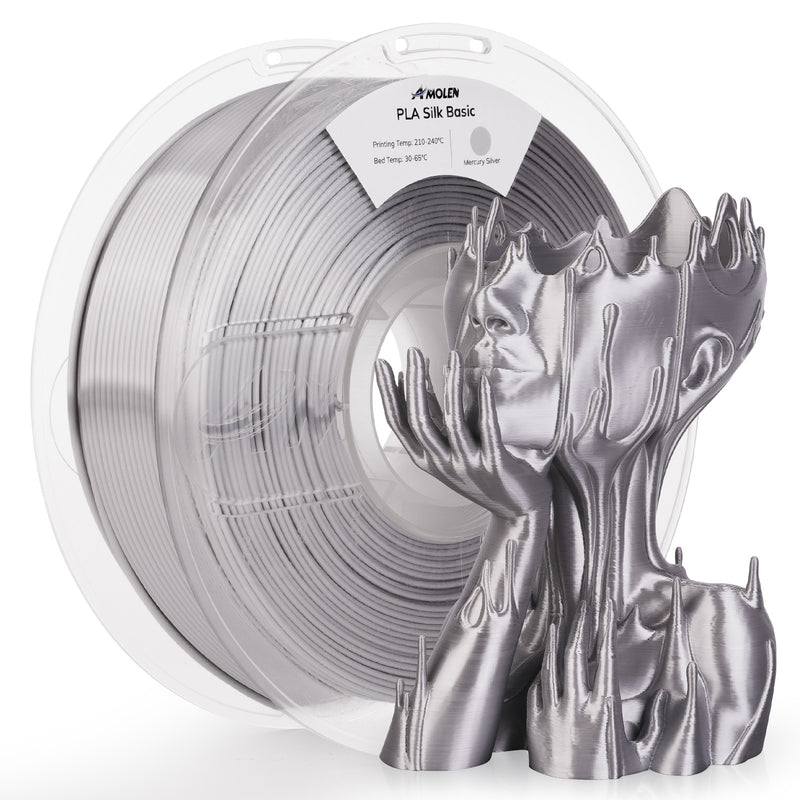Unlock the Secrets: Choose the Perfect Filament for Your 3D Printing Adventure!
In the world of 3D printing, the filament you choose can significantly impact the quality and durability of your creations. Among the myriad options available, PLA (Polylactic Acid) and ABS (Acrylonitrile Butadiene Styrene) stand out as the two most popular choices, each with unique characteristics that cater to different printing needs. PLA is known for its ease of use and eco-friendliness, making it a favorite for beginners and hobbyists. On the other hand, ABS is celebrated for its strength and heat resistance, ideal for more demanding applications. Understanding the nuances of these two materials is key to making an informed decision that aligns with your project goals.

Understanding PLA Filament
PLA filament is a bioplastic derived from renewable resources such as corn starch or sugarcane. This composition not only makes it a more environmentally friendly option but also contributes to its ease of printing. One of the primary advantages of PLA is its low printing temperature, typically ranging from 180°C to 220°C, which allows it to be used with a wide variety of 3D printers without requiring special modifications. Moreover, PLA adheres well to the print bed, minimizing the risk of warping during the printing process. These properties make PLA particularly suitable for prototyping, intricate decorative prints, and educational projects. Personally, I recall a friend who used PLA to create stunning models for a school project; the vibrant colors and smooth finishes were a testament to PLA's aesthetic capabilities. However, while PLA is user-friendly, it does have limitations. It is less durable than ABS, making it less ideal for functional parts or items exposed to heat, such as automotive components or kitchen tools.
Understanding ABS Filament
ABS filament, in contrast, is a petroleum-based plastic known for its robustness and durability. It has a higher printing temperature, usually between 210°C and 250°C, which can sometimes require a heated bed to prevent warping and ensure proper adhesion during printing. The strength of ABS makes it a preferred choice for creating functional prototypes, automotive parts, and other items that need to withstand wear and tear. One of the key benefits of ABS is its resistance to impact and heat, allowing for applications in demanding environments. Additionally, ABS can be easily post-processed with techniques like sanding, painting, and acetone smoothing, which enhances its finish and allows for greater customization. A friend of mine once shared his experience using ABS to create a custom casing for a Raspberry Pi project; the durability and professional look of the finished product were impressive. However, it's worth noting that ABS can emit fumes during printing, so using it in a well-ventilated area is crucial.
Comparative Analysis: PLA vs. ABS
When comparing PLA and ABS, several factors come into play. First, let's look at printing temperature: PLA is generally easier to print, requiring lower temperatures, while ABS demands higher temperatures, which can complicate the process for inexperienced users. In terms of strength, ABS takes the lead, offering better durability and resistance to impact, making it more suitable for functional applications. On the other hand, PLA excels in flexibility and ease of use, particularly for intricate designs. When it comes to post-processing, ABS provides more options due to its compatibility with various finishing techniques, whereas PLA is more limited in this regard. Environmental impact is another crucial consideration: PLA is biodegradable and derived from renewable resources, making it a greener option compared to ABS, which is not environmentally friendly. This comparison highlights the strengths and weaknesses of both materials, enabling makers to choose the right filament for their specific needs.
Choosing the Right Filament for Your Project
Ultimately, the choice between PLA and ABS hinges on the specific requirements of your project. If you are a beginner or working on aesthetic models, PLA is likely your best bet for its ease of use and vibrant finishes. However, if your project involves functional parts or will be subjected to heat or mechanical stress, ABS is the more appropriate choice. It's also essential to consider your printer's capabilities; some printers handle one material better than the other. As you embark on your 3D printing journey, evaluating your project's intended use, desired finish, and any technical constraints will guide you towards the filament that best meets your needs.
Making an Informed Choice
In conclusion, selecting the right filament for your 3D printing projects is vital for achieving the desired results. PLA and ABS each offer distinct advantages that make them suitable for different applications. From the environmentally friendly and user-friendly nature of PLA to the strength and versatility of ABS, understanding these materials will empower you to make an informed choice. As you explore the realms of 3D printing, remember to consider your specific needs and project goals, which will ultimately lead to a successful and enjoyable printing experience.







